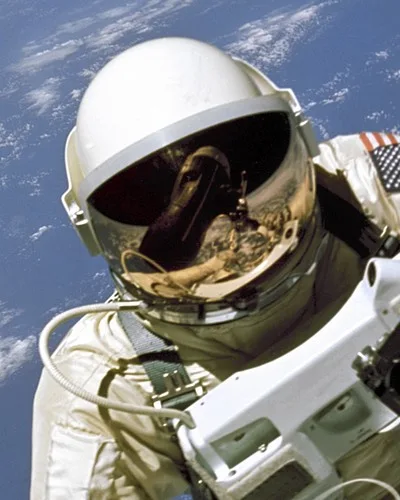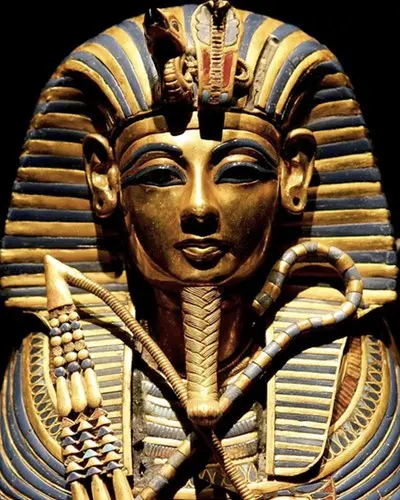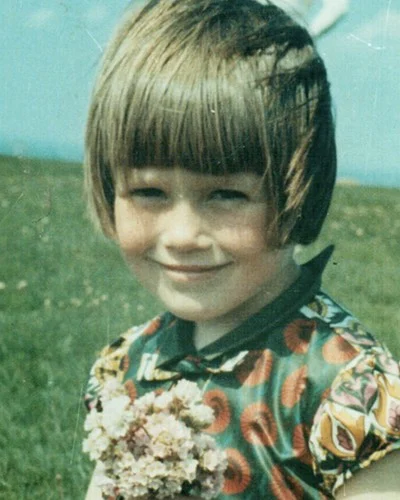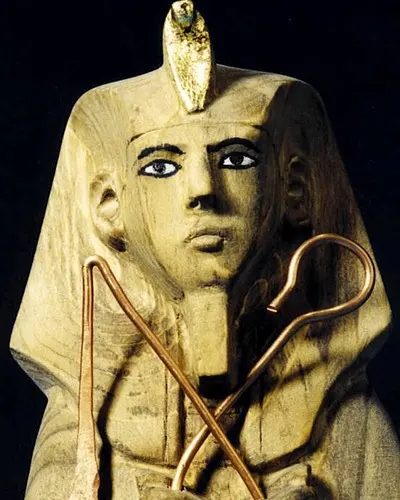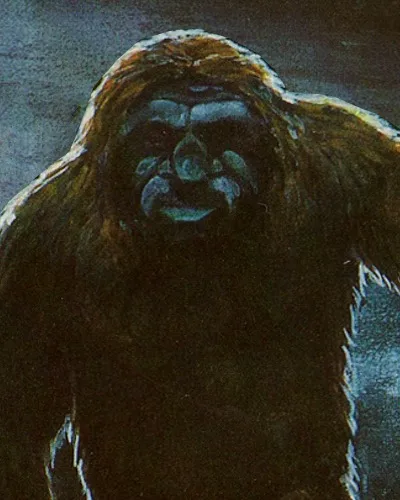It was New Years Day 1924 when seventeen-year-old Anna Mitchell-Hedges first saw it. An object of such awe-inspiring beauty and mystery that it would beguile the world for 70 years.
Lowered into the gloom of an ancient Mayan pyramid at Lubaantun, Belize, Anna saw a glimmer in the darkness. What she found was incredible — an exquisite life-size human skull, crafted in pure quartz crystal.
Anna was mesmerized by her discovery. The skull seemed to have an unearthly power and aura. The girl’s father, renowned adventurer and explorer Frederick Mitchell-Hedges, was certain it was old, very old.
Mitchell-Hedges had spent the previous year excavating the great thousand-year-old ruined Mayan city at Lubaantun and thought the skull, which he labeled the ‘Skull of Doom’, a sinister ancient artifact used in religious rites.
“It is at least 3,600 years old and according to legend was used by the High Priest of the Maya when performing esoteric rites”, he wrote in his autobiography in 1954.
“It is said that when he willed death with the help of the skull, death invariably followed. It has been described as the embodiment of all evil. I do not wish to try and explain this phenomenon”.
Mitchell-Hedges and his adopted daughter were not the only ones seduced by the skull’s immense beauty and sinister, mysterious power.
Later dubbed “the weirdest gem in the world”, those who have viewed the skull in person over the years attest to its strange ability to cast a spell on the beholder.
After Frederick Mitchell-Hedges’ death in 1959, the then middle-aged Anna would tour the crystal skull around the world, allowing private viewings for paying customers.
Countless TV programs, newspaper articles, and books would be produced exploring the enigmatic artifact. Principally through Anna’s tireless promotion, what was once an obscure curiosity would soon become one of the most famous strange objects in the world.
Supporters would even start to claim the skull had supernatural powers. Could it really read minds, heal the sick and predict the future? Was it, as some suggested, an ancient computer encoded with the wisdom of the lost civilization of Atlantis? Or even the work of aliens?
The legend of the skull was growing, fuelled by the enduring mystery of its origins. But despite Anna’s claims, a persistent group of skeptics had begun suspect the skull was a modern fake and Anna’s story a fabrication.
In 1970, in an attempt to dispel these doubts, Anna drafted in Hewlett-Packard to conduct tests on the skull. As one of the world’s leading experts in quartz crystal, the firm was best placed to determine just when and how the extraordinary object had been created.
Their findings were a sensation. The skull was so finely constructed and finished that even the most modern tools would struggle to replicate it. According to one member of the team, the skull shouldn’t even exist.
For many, this was proof that the skull had been produced by an advanced civilization lost to history, a culture with technology beyond what we have even today.
Anna seemed vindicated. Could it be she really was in possession of a mystical ancient artifact whose origins were lost in the mists of time?
Evidence for
Science steps in
In the 1960s, Anna Mitchell-Hedges entrusted the skull into the care of crystal expert Frank Dorland. Whilst quartz crystal itself cannot be dated, Dorland felt a microscopic study of the skulls workmanship might reveal more about its origins.
To that end, in 1970 Hewlett-Packard was called into to examine the skull. The computer and electronics giant had some of the world’s leading experts in quartz, as well as high-tech microscopes and x-ray equipment.
The firm’s analysis of the skull only seemed to deepen its mystery. According to their experts, the skull was made from a single piece of pure natural quartz and would have taken years to carve, even with the most advanced diamond tools.
But the firm felt it unlikely modern tools were used in its construction. Even under extreme magnification, they were unable to find any trace of machine tools. If it had been created using modern power tools, its maker had seemingly gone to great lengths to disguise it.
Furthermore, the skull appeared to have been carved against the quartz crystal’s natural grain, which they felt would have caused it to shatter if machined with powered tools.
Some of the skull’s other unusual electrical and optical properties also amazed the scientists at the firm’s Santa Clara labs.
The type of quartz used was piezoelectric silicon dioxide, today used widely in modern electronics. Indeed, the skull had positive and negative polarity and was capable of producing an electrical charge when under mechanical stress.
Even stranger was the skull’s optical properties. It was designed in such a way that light channeled from below would be focused out through the eye sockets. It also featured an internal prism that reflected the skulls surroundings inside of the crystal.
Hewlett Packard’s discovery of these unique qualities did much to cement the skull’s reputation as a deeply mysterious artifact.
Had the Mayans created it with some lost technology? Or had they merely inherited the artifact from a much earlier and more advanced civilization forgotten by history?
Worship of the skull
When Anna Mitchell-Hedges found the skull at Lubaantun, she says the Maya workers in the expedition immediately recognized it as a sacred artifact of their people.
Whilst no other crystal skulls have been found at any of the hundreds of well documented official Mayan or Aztec archeological sites, skulls were a recurring motif in ancient Mesoamerica, widely used in carvings and religious artworks.
The Mayan god of death, Ah Puch, was depicted as a skull on a body of rotting flesh and several Aztec gods are also represented as skulls.
The walls of Chichen Itza, a 1500-year-old Mayan city located in present-day Yucatan, are decorated with rows of carved skulls, replete with sinister grins. The Temple of the Skull at Palenque, another Mayan city, features a large carving of a toothy skull on one of its pillars.
Later Mexican cultures would use real human skulls inlaid with bright blue and black lignite, red oyster shell, and polished iron pyrite. The skulls were used to represent one of their most important creator gods — the Smoking Mirror Tezcatlipoca.
Today, belief in the power of skulls remains amongst what is left of the Mayan people. The Lacandon, still active around the ruins of Palenque, use crystal skulls in their religious rituals.
One priest, K’in Garcia uses such a skull during ceremonies to worship Hacha’kyum, the Mayan god of creation. The Lacandon elders believe the skull has mystical powers, can cure the sick and will stave off the deforestation that still threatens their people.
Visions of the past
Hewlett-Packard’s discovery in 1970 of unusual electrical and optical phenomena in the skull encouraged much speculation about it’s paranormal and otherworldly qualities.
The timing was perfect. The late 60s and early 70s saw the birth of the New-age movement and the skull was seized upon as a possible relic of a distant lost civilization, even a repository of esoteric knowledge.
Several purported paranormal qualities have been attributed to the skull over the years. Anna Mitchell-Hedges herself once claimed it gave her a premonition of the death of President Kennedy in 1963. Others attribute mysterious deaths to the skull.
But the most common accounts are of visions and strange sounds. Frank Dorland, entrusted the skull by Anna in the late 60s, reported numerous odd experiences whilst in its presence.
He would see images of ancient temples in the skull’s eyes, Lubaantun at the height of the Mayan civilization. Alongside the visions he could hear metallic bells, singing, whispered voices and the sound of icy mountain streams.
Dorland, who started out as an engineer before becoming a noted art conservator, went on to write extensively about the powers of rock crystal. He believed the skull’s powers had a scientific explanation, something he called biocrystallography.
Dorland did not think the visions were paranormal phenomena, but a natural synchronicity between the crystal and the human brain — “the mass of crystal in some way triggered certain reflexes in the brain, to make you think that you were tasting things, hearing things or seeing things”, he said in 1988.
"the mass of crystal in some way triggered certain reflexes in the brain, to make you think that you were tasting things, hearing things or seeing things"
Frank Dorland
Could Dorland be right? Was some property in the crystal itself triggering hallucinations in those receptive to it’s energy?
Whilst exhibiting it in San Franciso in the early 70s, Dorland buttressed his theory by gathering accounts from dozens of other people who experienced similar visions.
However, many of those experiences did come from observers predisposed to the skull’s supposed supernatural powers, who were often deep in meditation and highly receptive to visions. Could it be they were simply bamboozled by the skulls curious optical qualities?
Evidence against
Skullduggery
Anna Mitchell-Hedges’ romantic account of finding the awesome Skull of Doom amongst the ruins of an ancient Mayan city when she was just a girl captured the imagination of millions of people around the world
However, a cursory study of her claims reveal a terrible truth. At best her story is heavily embellished, and in all likelihood it was entirely fictional.
Fredrick Mitchell-Hedges makes no mention of the skull until his 1954 autobiography ‘Danger My Ally’, where he declines to state its origins. Mitchell-Hedges was a self-publicist and notorious teller of tall tales, so for him to fail to mention this most extraordinary of finds is somewhat curious.
In fact, no reference to the skull exists anywhere prior to a 1936 British anthropological journal, where it was reported to be not in Mitchell-Hedges’ possession at all, but that of an art dealer called Sydney Burney.
A note in the archives at the British museum states the skull was then put up for auction in 1943, failed to sell, but was eventually purchased in 1944 for the sum of £400. The buyer? Frederick Mitchell-Hedges.
Was the whole story of finding the skull in a ruined Mayan city twenty years earlier a fabrication?
None of the written accounts by those who took part in the Lubaantun expedition in the mid-1920s contains any reference to the presence of the teenage Anna or the discovery of the skull.
Indeed, Mitchell-Hedges himself, in his extensive writings and lecture tours following the dig also fails to mention Anna’s presence or the discovery of the skull. Likewise, a 1927 British Museum report on the dig also contains no reference to the skull or the presence of the teenaged Anna.
Whilst there are numerous photographs of Mitchell-Hedges, Thomas Gann, Lady Richmond Brown and other members of the expedition in and around the ruins of Lubaantun, not a single one features Anna or the skull.
The sad truth is Anna Mitchell-Hedges not only made up her incredible story about finding the skull in the ruins of Lubaantun, she was never there at all.
The genesis of her lie appears to begin not in the 1920s, but the 1960s, shortly after she came into possession of the skull and when she began to correspond with art restorer Frank Dorland.
It is in her letters to Dorland that the whole legend of the crystal skull is born. We find the first reference to Anna been present at the dig and the first reference to her finding the skull. After several further embellishments it eventually evolved into the one she would continue to tell for the rest of her life.
Why such an elaborate lie? One possibility is that Anna’s latter-day fiction about personally finding the skull was simply designed to re-enforce her ownership claims to the artifact in light of her subsequent attempts to sell it.
Another possibility is the abiding influence of Frederick Mitchell-Hedges himself. The archeologist was widely regarded as slapdash and reckless, and especially prone to gross exaggerations about his exploits. His writings are replete with absurd tales of Atlantis, giant sea creatures, and personally arm-wrestling gorillas.
Perhaps if nothing else, Anna, who Mitchell-Hedges adopted in 1919 when she was ten years old, was simply continuing her father’s habit of spinning outrageous yarns.
The end is nigh
Like so much in her life, Anna Mitchell-Hedges attributed her amazing longevity to the power of the skull. On this point at least, she may have had a point. Outliving many of her critics, Anna finally died in 2007 at the grand old age of 100.
Shortly before her death, she gifted the skull to her young husband Bill Homann. Like Anna, Homann would continue to firmly believe in the skull’s authenticity.
But within a year, the matter would be settled once and for all.
Jane MacLaren Walsh, an anthropologist at the Smithsonian, had taken an interest in crystal skulls after one was anonymously gifted to the museum in 1992. Walsh felt it doubtful they were genuine Mayan or Aztec artifacts as there was no record of either culture working crystal.
Although the Mitchell-Hedges is by far the most beautifully worked crystal skull in the world, it is not unique. Similar skulls exist in the British Museum and the Musée de l’Homme in Paris.
What intrigued Walsh was she could find no reference to these artifacts prior to the second half of the 19th century, when they suddenly start appearing in the shop of a French antique and curio dealer with a penchant for Mexican art named Eugene Boban.
The Paris and British skulls were both, it turns out, from Boban’s shop. But had he acquired genuine ancient artifacts or faked them? The British museum and the Smithsonian teamed up to find out.
Like Hewlett-Packard in 1970, they were unable to date the actual quartz, but the team did have far more sophisticated tools at their disposal to determine how the skulls had been produced.
Using an electron microscope, X-ray crystallography, and CT scans, the results were definitive. Tell-tale tool marks showed the skulls had been produced using modern jewellers equipment, first available in the 19th century.
Trade in fake pre-Columbian artifacts was common at the time and it seems Boban had tried to cash in on the craze by commissioning the skulls, likely from artisans in Germany who specialized in working with quartz.
But what of the Skull of Doom? In 2008, Bill Homann, the skulls new guardian took it to the office of Jane MacLaren Walsh for her assessment. Whether this was brave or foolish is a matter of debate, but either way Homann did not like the answers.
Using the same advanced tests applied to the Paris and British museum skulls, Walsh was able to determine beyond any doubt that the legendary Mitchell-Hedges skull was also a modern fake, likely an improved copy of the London skull.
Science had finally solved one of the greatest mysteries of the 20th century. But that wasn’t the end of the story for everyone.
Bill Homann’s faith, for one, remained intact. Homann reasoned that if the skull was made with modern tooling this was just evidence that the ancients had advanced technology unknown to history.
That’s the power of the Skull of Doom in a nutshell. Wherever it came from, however it was made, it’s ability to cast a spell on the beholder remains undiminished.
Other image credits — Mike Peel/wiki, Rafał Chałgasiewicz/wiki
Are the mysterious crystal skulls ancient artifacts with mystical properties? - add your comment below












